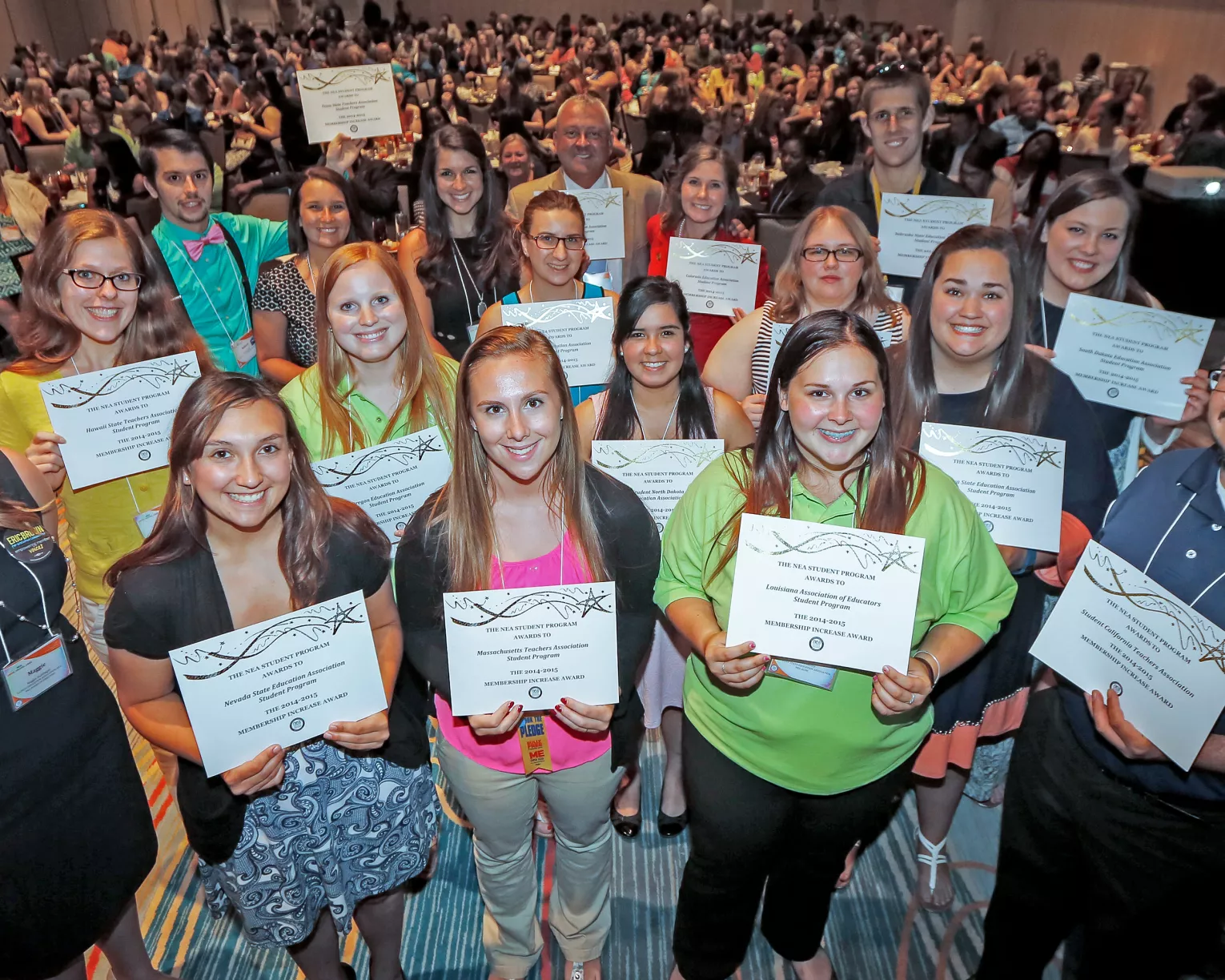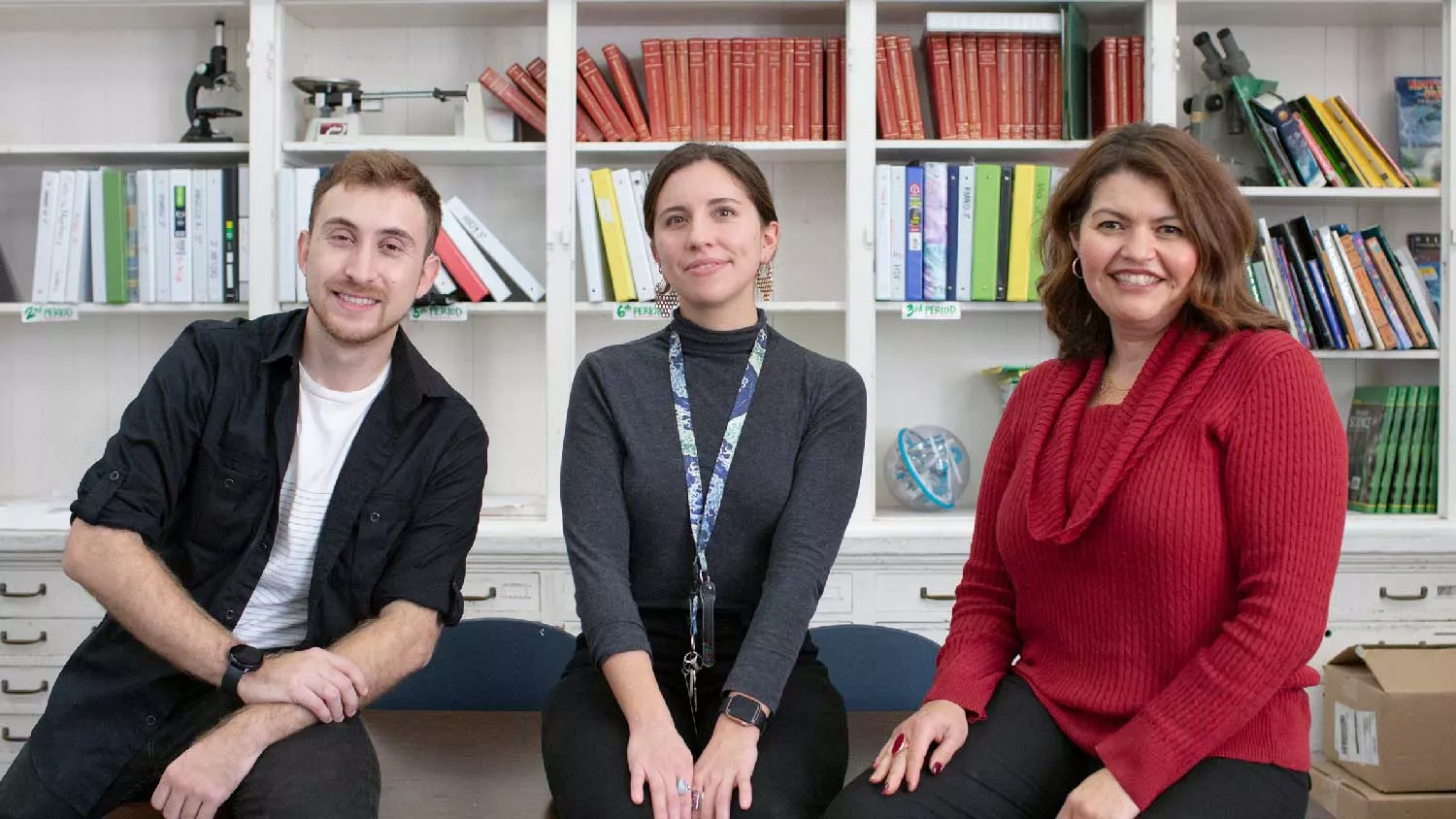Growing up in South Central Los Angeles, Jaime Vazquez says he was poor his entire life—until he started his career in education. But that wouldn’t have been possible without a teacher residency program that offered him a stipend to help pay for rent, food, and, best of all, tuition assistance—removing one of the biggest barriers to college for students of color.

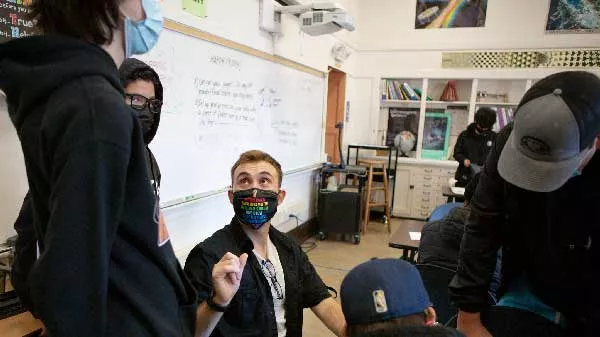
Vazquez is in the San Francisco Urban Teacher Residency (SFUTR) program, a partnership between Stanford University, the San Francisco Unified School District, and United Educators of San Francisco.
Much like hospital residencies, where a student follows an attending physician, teacher residents learn from actual classroom experiences.
SFUTR residents spend a year in a high-needs school, preparing them to work in the same district after graduation. They have one class and one mentor-teacher the entire time, allowing them to become immersed in the classroom culture, build relationships, and make strong connections.
“I’m not learning to teach a subject, I’m learning how to teach a subject to kids—learning about them as human beings with struggles and traumas that must be understood,” Vazquez says. “You can’t teach kids if you don’t know them, and you can’t know them without spending a lot of time with them.”
A growing model for student teaching
Nationwide, teacher residency programs are emerging as a model to significantly improve the readiness of candidates entering the profession. They offer pedagogy coursework and a full year or two of clinical practice alongside a qualified mentoring teacher.
California has allocated $350 million in competitive grants for creating and expanding teacher residency programs—allowing more students to have access to this transformative experience.
And now that President Joe Biden’s American Rescue Plan has become law—in large part due to the advocacy of NEA and educators nationwide—more funding has been directed to teacher preparation programs.
So the number of residency programs nationwide is expected to increase. The U.S. Department of Education is even setting up a system to track this progress, gathering data on the programs as they expand.
The idea behind the residencies is to offer intensive support to student teachers at the beginning of their careers, setting them up for success and reducing the churn so often seen in their first five years in the classroom.
By bolstering new teachers’ classroom skills and providing a network for collaboration, residencies aim to reduce burnout, keep educators in the profession, and help address the teacher shortages that plague so many school systems.
From resident to attending
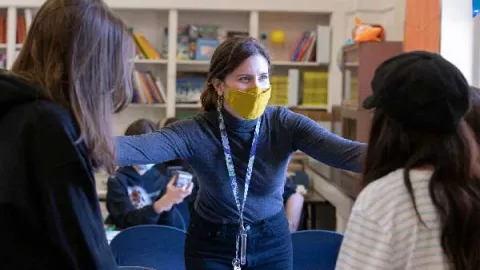
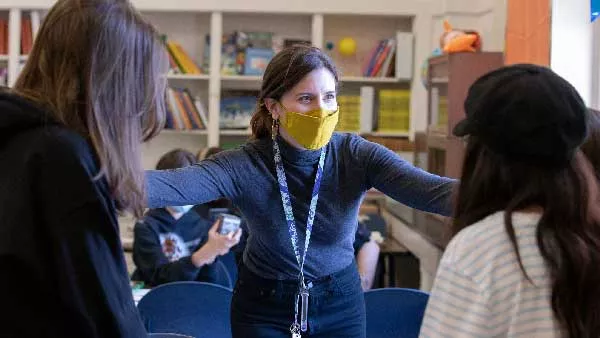
SFUTR graduate Cecilia Frisardi is now in her third year as a science teacher at Aptos Middle School, in San Francisco. She says her residency was invaluable in launching the career she now loves.
“In one year, with a stipend and tuition assistance, I had a master’s degree and teaching certification, and a guaranteed job in a school,” she says.
And after her residency ended, SFUTR’s support continued as she entered the professional world, providing a teaching coach during her first two years.
Now that she’s in her third year, Frisardi has a resident of her own—Jaime Vazquez.
“It was kind of a trip to go from being new to the game to having a student resident,” she says.
As an attending teacher—also called a cooperating teacher, or CT—she receives ongoing training, where she learns the best way to mentor Vazquez and partner with him in the classroom, which strengthens both of their practices.
The Classroom Academy
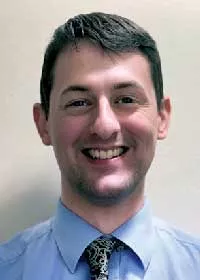
On the opposite coast, a teacher residency program in New York helped Luke Zauner follow his dream of becoming a teacher. After getting furloughed from his job as an assistant manager of a movie theater, he decided to pursue a graduate-level teaching degree at the State University of New York (SUNY) Plattsburg. That’s where he learned about the Classroom Academy—a residency program, launched with an NEA grant, for graduate students at Zauner’s school as well as New York’s Sage Colleges and SUNY Empire. The program places residents in school districts throughout upstate New York.
Now in his first year with the program, Zauner is a resident social studies teacher at Schenectady High School and works with his attending teacher and mentor, Julianna Vrooman.
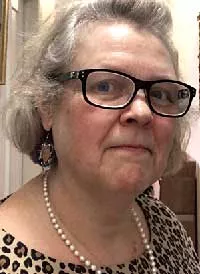
“What attracted me besides the stipend was the real-world, hands-on experience I’d get from two years in a classroom,” says Zauner, who earns an annual stipend of $22,000, plus $5,000 each year in tuition assistance.
“I was comfortable that I’d become an effective new teacher, not as anxious or uncertain as I’d be without that time spent with students,” he adds.
He is working with a diverse population of students, which he says offers lessons that wouldn’t be possible sitting in a college class or reading a textbook.
“There are a lot of things the kids have to deal with, things that are much different than what I faced where and when I grew up,” he says. “Having an attending teacher help explain the context and the reasons some kids act the way they do has deepened my understanding of the challenges and what I can do to connect and help.”
‘It’s all about relationships’
The best residencies are founded on social justice principles, so new teachers can learn from day one what it means to create educational justice, says SFUTR’s Director of Clinical Education Esther Jaramillo-Woo. In her program, cooperating teachers, coaches, and professors name and emphasize equity in all aspects of the residency.
“We are talking about implicit bias, what it means to be anti-racist, how to create culturally competent curriculum, and how you, as an individual teacher, need to be self-reflective and change and evolve,” she says.
Teacher residency programs are equally intentional about community-building. “Teaching can be very isolating, but our residents form tight cohorts and rely on each other,” Jaramillo-Woo adds. “They also see how critical it is to build close relationships with students, which can’t be done as effectively without spending more than a semester with them.”
In addition, residents learn that social and emotional learning is the foundation for engaging students in a rigorous curriculum. “It’s all about relationships, which is why I’m so grateful for SFUTR,” Frisardi says.
Rather than simply observing, she says, residents jump into the classroom for the entire arc of the school year and have the opportunity to meet and collaborate with educators throughout the district.
“I have so much knowledge of the different schools and their student populations, of our city, and about the craft of teaching,” she says. “SFUTR is very community-driven. It’s grounded in it.”
That’s what drew Vazquez to the program, too. “I wanted to work in a district that focuses on community diversity, inclusion, and social justice, especially during these politically tumultuous times,” he says. “SFUTR has given me the knowledge of how our school community has been negatively impacted by policies like redlining. That knowledge is going to help me fight for my kids, and I know my district is going to back me up.”
Learn More
NEA’s School Me Podcast “How to become a teacher” explores the steps required to become a teacher. Listen at nea.org/becomeateacher.
Classroom Academy launched a five-episode podcast, “Learning Made Real,” available on Apple, Spotify, and Google. Go to learning-made-real.simplecast.com.
NEA can help you be Profession-Ready on your first day in the classroom. Check out nea.org/professionready.
